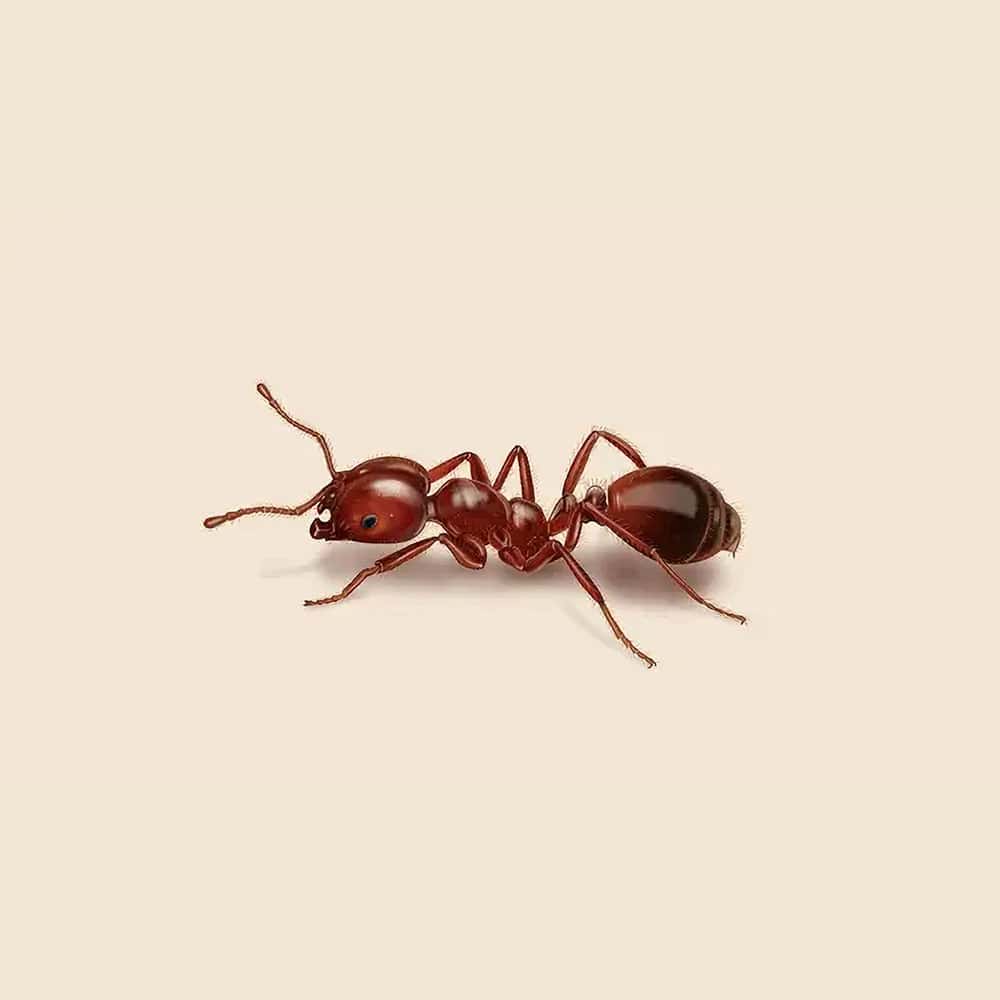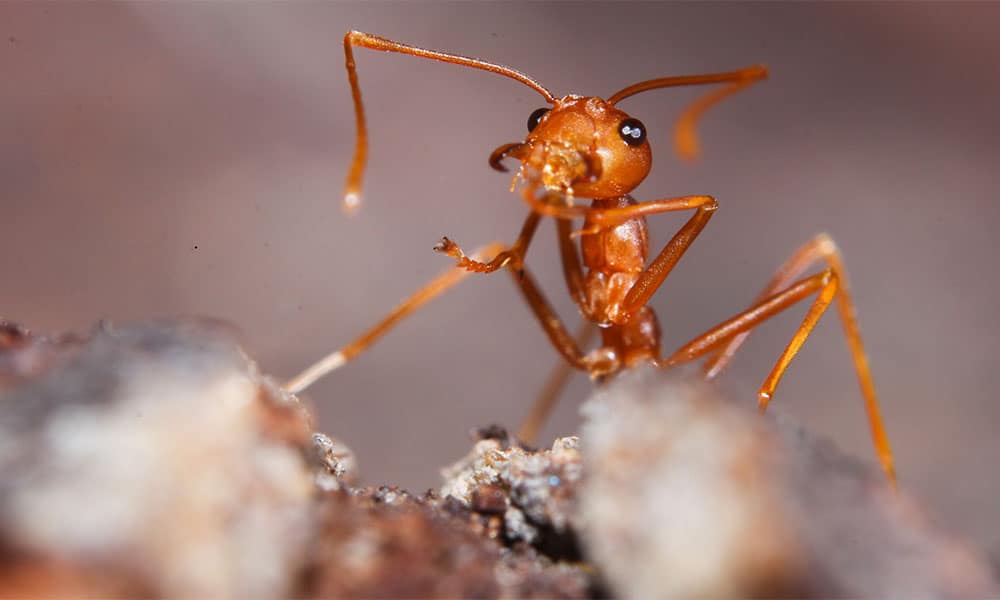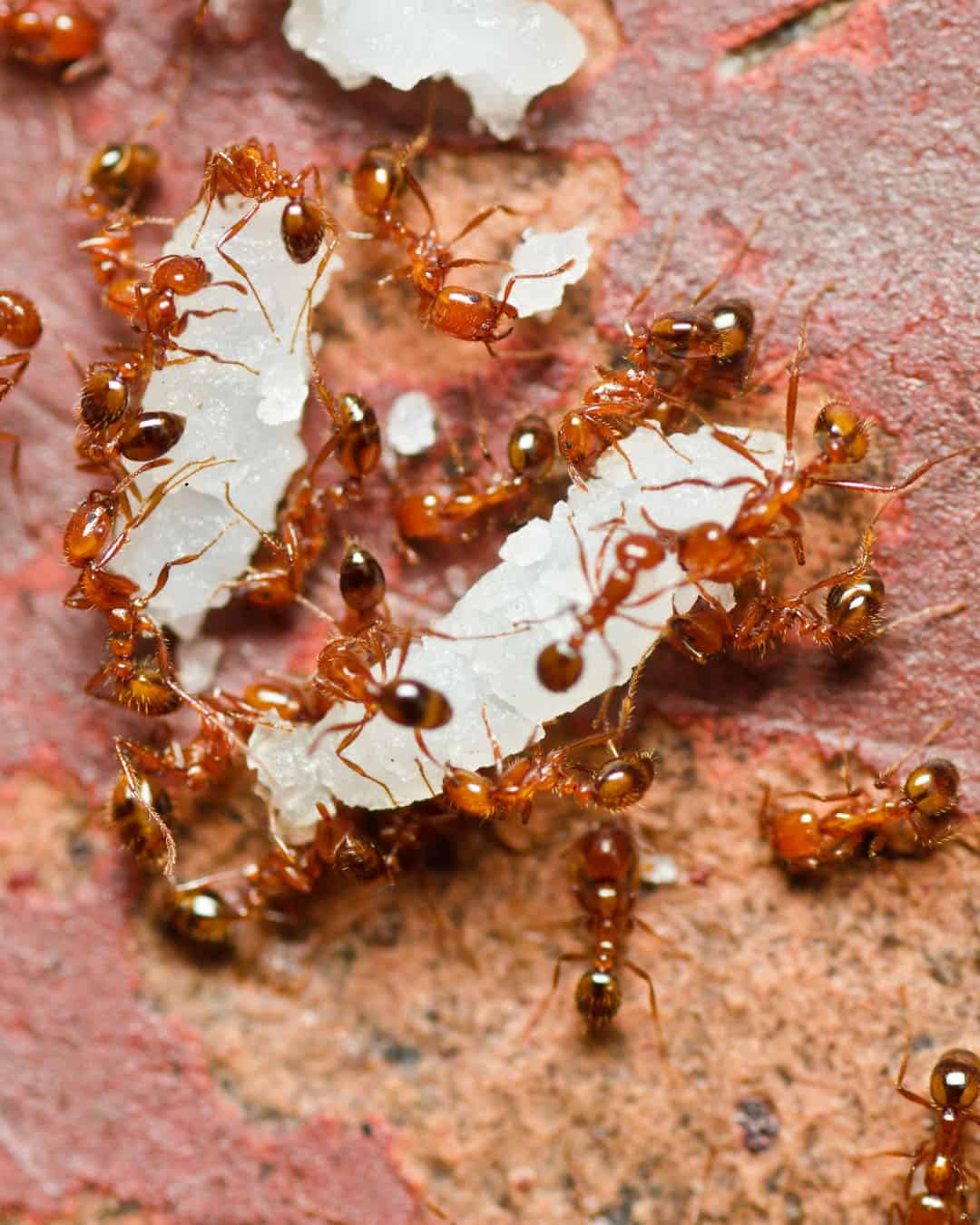Fire Ant Facts & Information
Fire ants, notorious for their painful stings and aggressive behavior, can pose significant risks to both humans and animals. These ants are known for forming large colonies and quickly spreading throughout lawns, gardens, and even homes.

Solenopsis Invicta
What You Need To Know About Fire Ants
What do fire ants look like?
Fire ants are small, ranging from 1/8 to 1/4 inch in length. They are reddish-brown to black in color and have a segmented body with a distinct stinger at the end of their abdomen. They also have elbowed antennae and a smooth, shiny exoskeleton.
What do fire ants eat?
Fire ants are omnivorous and feed on a variety of foods, including insects, earthworms, ticks, spiders, honeydew, and other sweets. They also scavenge for proteins, fats, and oils, often invading homes in search of food.
What sort of habitat do fire ants live in?
Fire ants prefer warm, sunny environments and are commonly found in lawns, gardens, fields, and pastures. They build large, mound-shaped nests in open areas, often near water sources. These mounds can be quite large and have extensive underground tunnels.
How do fire ants commonly behave?
Fire ants are known for their aggressive behavior, especially when their nests are disturbed. They swarm out of their mounds and can inflict painful stings that cause a burning sensation and pustules. They are highly territorial and will fiercely defend their colonies.
Did you know this about fire ants?
Fire ants are notorious for their painful stings, which can cause severe allergic reactions in some individuals. Their venom contains alkaloids that can lead to intense itching and pustules that last for several days. Interestingly, fire ants are excellent survivors; they can form floating rafts during floods by linking their bodies together to protect their queen and larvae. This unique behavior allows them to survive extreme conditions and spread to new areas, making them a resilient and invasive species.
Understanding Fire Ant Infestations
Understanding fire ant infestations is crucial for effective management. Fire ants build large, noticeable mounds in open areas and can invade homes in search of food and water. Disturbing their nests can lead to multiple, painful stings that inject venom, causing intense burning and itching. Fire ants are particularly challenging to control due to their resilience and ability to relocate their colonies rapidly.

How Hearts Handles Fire Ant Treatment
Hearts Pest Management employs an integrated pest management approach to handle Fire Ant infestations.
Fire Ant Inspection
Fire Ant Treatment
Fire Ant Prevention
Educational Resources

Think You Might Have a Fire Ant Infestation?
At Hearts Pest Control, we understand the challenges associated with Fire Ant infestations and are here to provide professional solutions tailored to your needs. Flourishing in warm and humid climates, they are prevalent in many regions, including San Diego County, Orange County, and Los Angeles County.